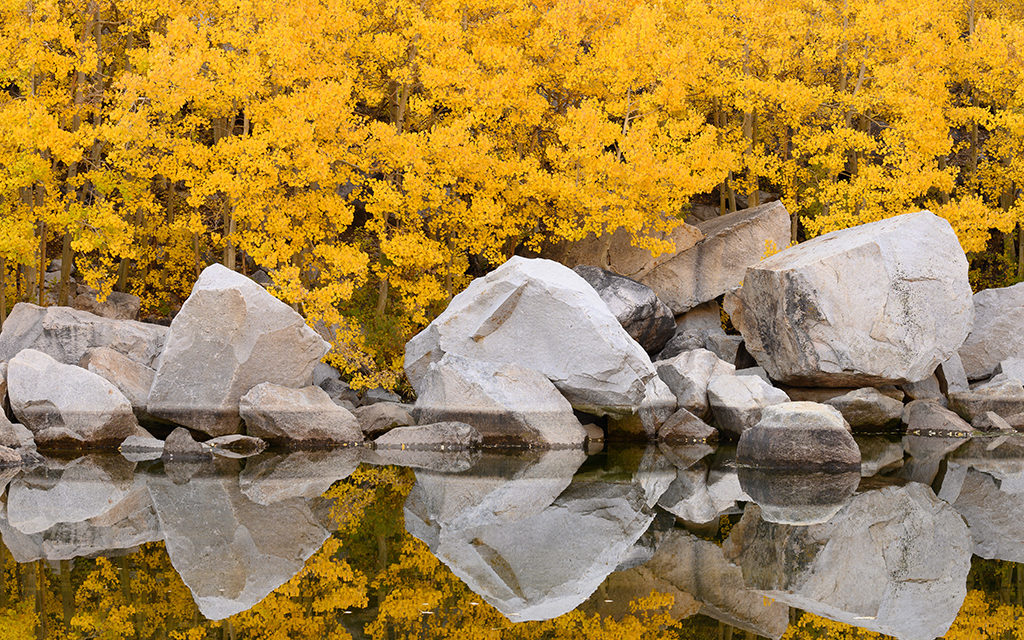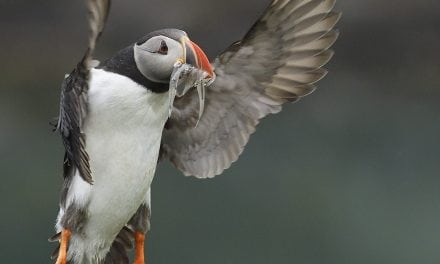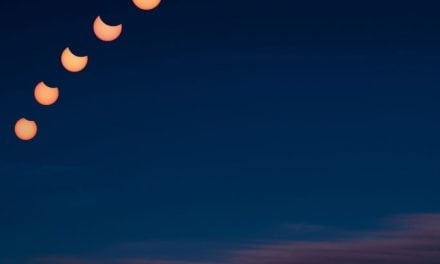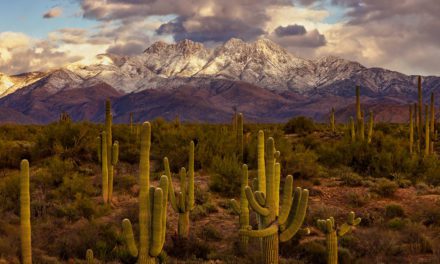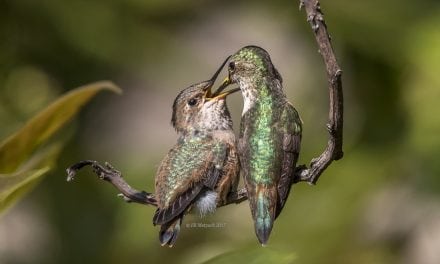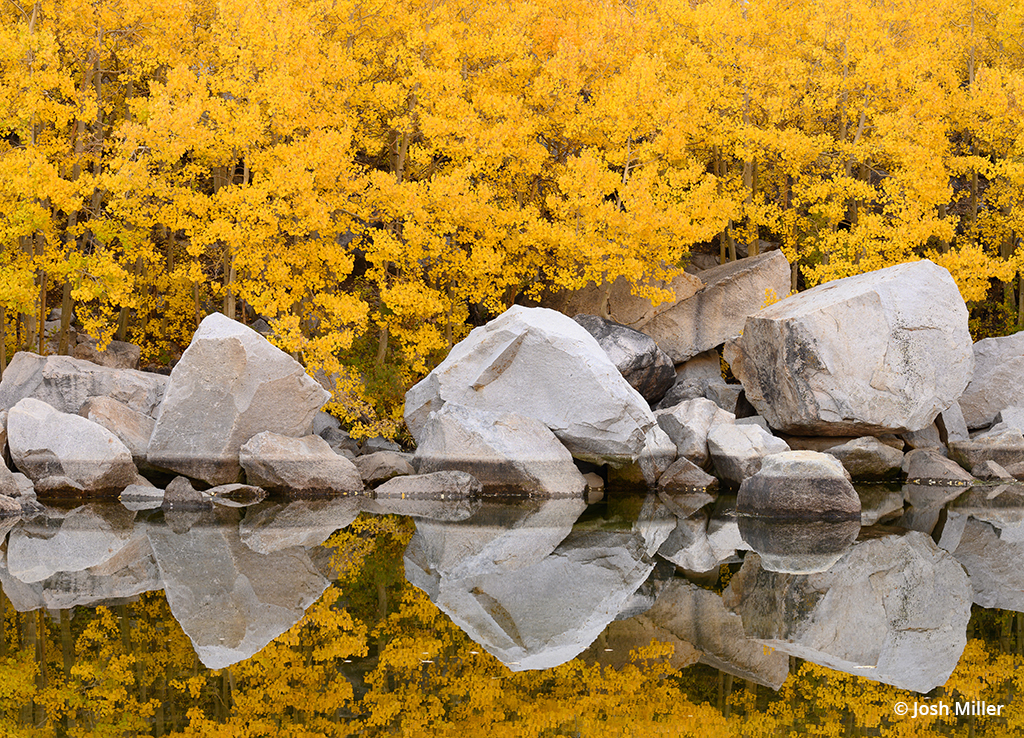
This pond didn’t look like much from the road where I saw it, but I figured it was worth exploring a bit more up close. As it turned out, with a little help from my circular polarizer to control how the reflection appeared in the water, I was able to get several images from this little pond that have ended up in calendars and have been very successful prints.
While every season has something unique to offer nature photographers, fall has to be the absolute best time of year for landscape images. The brightly colored leaves, increased chances of dramatic weather and, in some parts of the country, the chance of an early snowstorm that puts a white dusting on trees and makes the colors really pop all combine to make this an incredibly photogenic time of year. Here I’ll share my best advice to help you get the most out of your next autumn adventure.
Reading The Light
The biggest part of landscape photography is learning to read the light. Yes, we all get hung up on gear and camera settings, but over time as you grow as a photographer, those things become easier, and it’s ultimately your ability to read and adapt to the light that will set your work above others.
One of the first things about reading light is understanding the type of light that’s best for a given subject. While the principle applies in all outdoor photography, it is even more noticeable when shooting fall color. The first lesson: Don’t trust your eyes. By that, I mean the human eye and mind do an amazing job at compensating for harsh lighting and shadows in a way that your camera just can’t. Learn to perceive how your camera “sees” and its limitations, rather than how your eyes see. This will enable you to make technical adjustments to compensate for issues like extreme contrast in a scene.
Shooting Fall Color In The Shade
While it may seem counterintuitive, if you really want to make those fall colors pop and have great detail in your photos, then shooting when your subject is in the shade or under overcast skies is best.
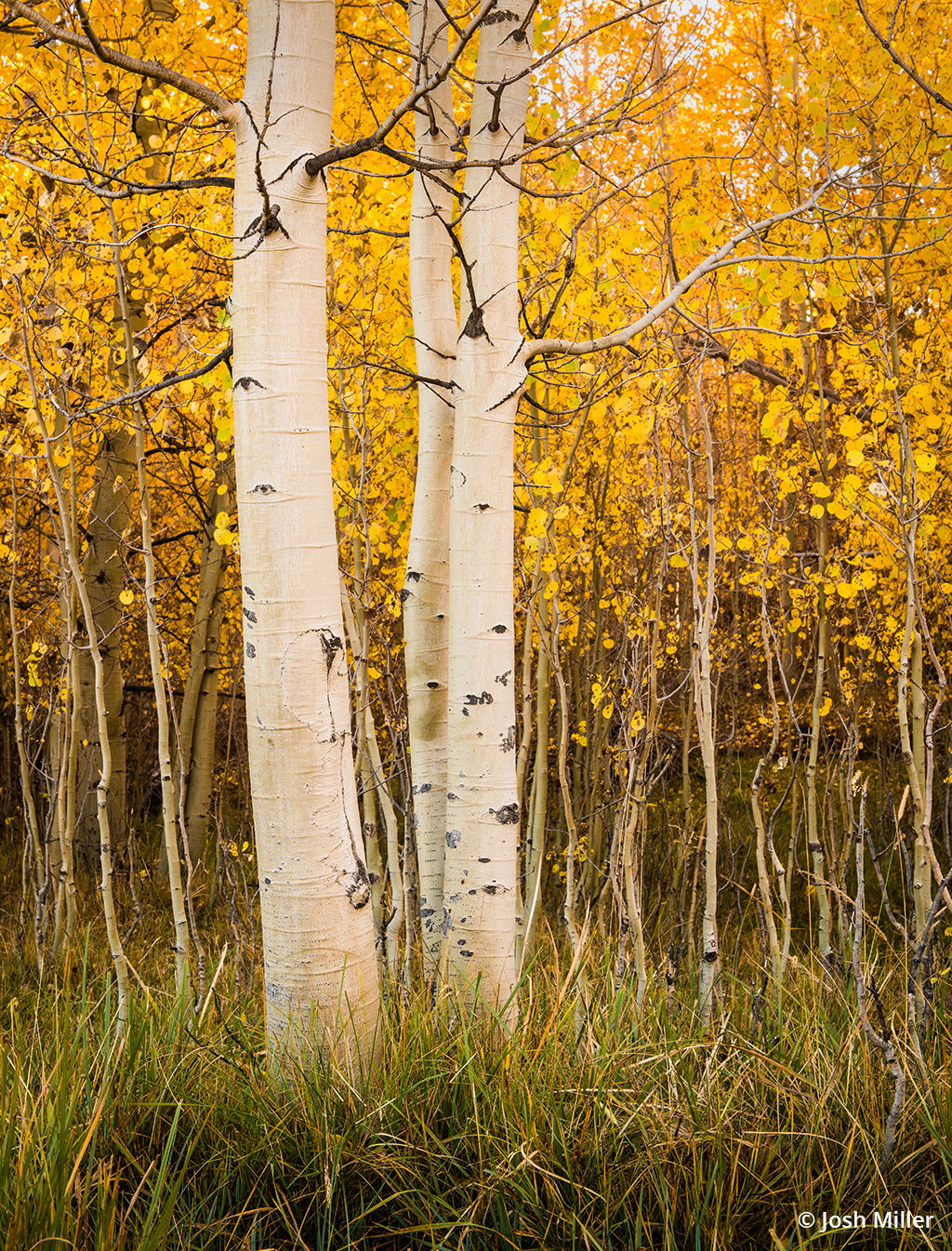
Shooting in the shade. This image of an aspen trunk was shot in the shade while most of the grove was already in the direct sunlight. By finding a small patch of shade, I was able to continue working well beyond sunrise and eliminate the harsh contrast the sun would have added to the scene.
Of the photos I have included with this article, nearly all of them were shot in the shade or under cloud cover. This reduces the contrast and removes any harsh shadows cast from bright sun filtering through the trees. It allows the colors to appear more vibrant and the image to appear sharper.
Shooting in the shade may also lead to longer shutter speeds. This can create an issue if the wind is moving the leaves, but it also makes shooting flowing water easier. Personally, I have an affinity for long lens shots in the shade, which I’ll get to in a moment.
Shooting Foliage In The Sun
While most of the time I prefer to shoot in the shade, there are definitely times when the added contrast of sunlight helps make a photograph come alive. While closer shots usually do well with reduced contrast in the shade, the sun adds much-needed contrast for more distant shots, giving photos a stronger sense of depth.
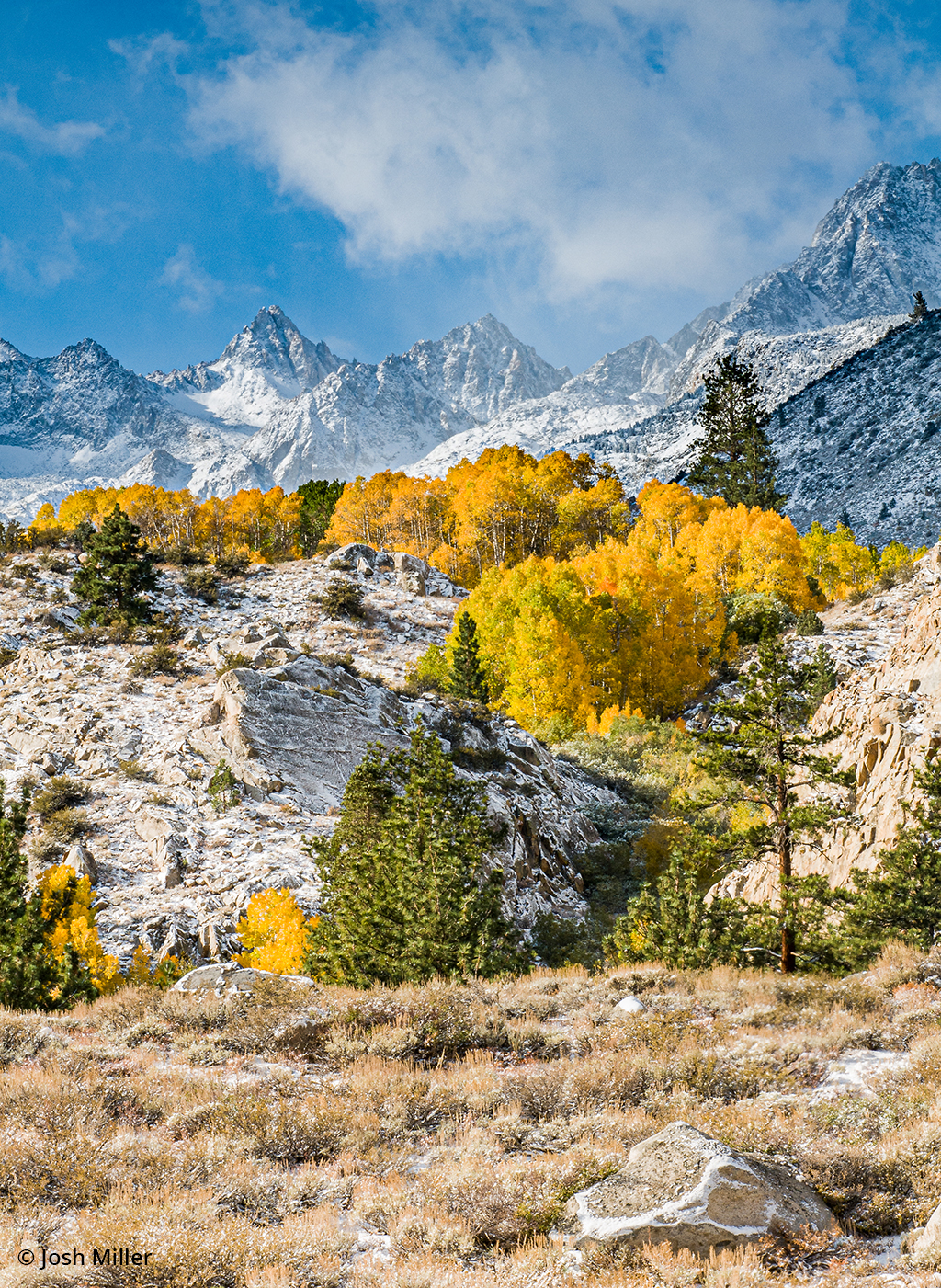
Shooting in the sun. This image of the Sierra Crest illustrates the impact of strong, high-contrast sunlight on distant subjects. I lucked out with a fresh dusting of snow combined with bright contrasty light on the peaks while having a bit of thin cloud cover diffusing the light in the foreground. Thus, the contrast increases the farther away you go from the camera. Add in the dusting of snow to reflect the light, and the image pops off the page.
Think of shooting far-off mountains. When the light is flat (shade), the mountains just don’t jump out at the viewer. Once you add in some interesting (sunrise/sunset/storm) light hitting the mountains, they suddenly pop.
The best of both worlds would be when you can have a beautiful shaded aspen grove in the foreground with an amazing light show going on in the mountains behind it. Often locations like these are well-known spots that attract crowds, but with some research and exploration, it is often possible to find your own unique angle where you can combine both types of lighting at sunrise or sunset.
Isolate Your Subject With A Long Lens
So far, I have focused mostly on lighting and conditions, but a big part of getting the most out of your fall photography is choosing the right focal length. Notice I didn’t say right “lens” because it is less about which lens and more about what you choose to include or exclude in your shot.
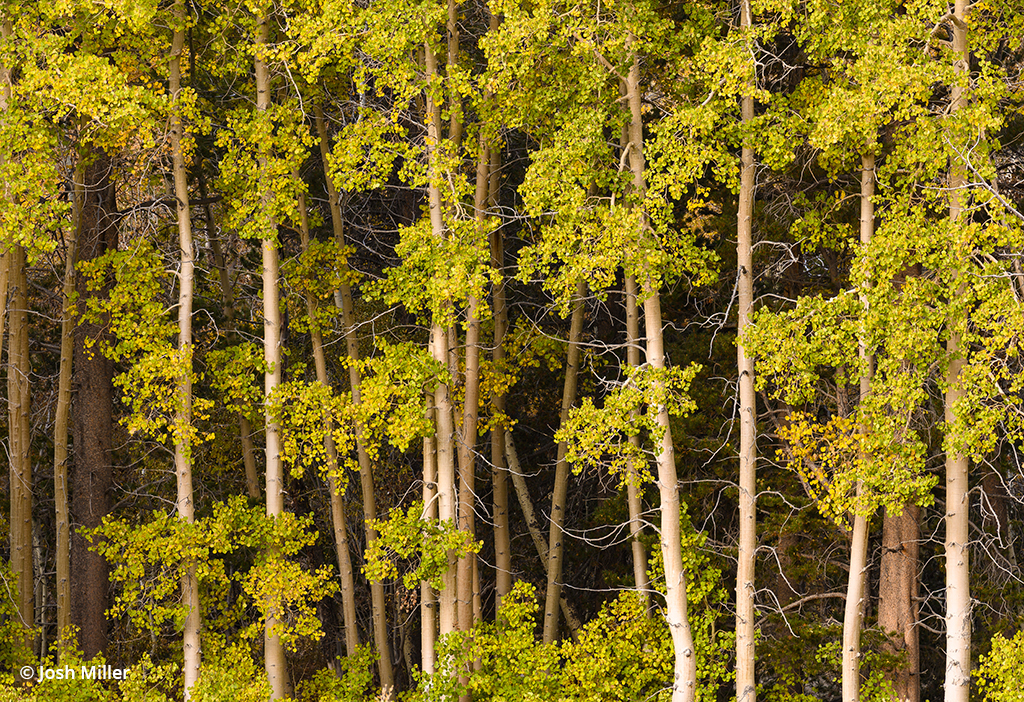
Isolate your subject with a long lens. This image of aspen trunks against a darker background illustrates the effects of shooting with a longer focal length to isolate a subject from distracting elements. At first, I shot this grove with a wider lens, but I kept noticing distracting branches and trees that drew the eye out of the frame. As I started zooming in, the tighter I got, the fewer of these distractions remained. I ended up zooming into almost 400mm to cut out a tiny portion of a big scene.
I think we all fall victim to “wideangleitis” when we see that amazing fall aspen grove and want to include as much of the magic as possible. We thus end up often shooting too wide. We likely would be better served to isolate a small part of the chaotic scene with a longer focal length.
Aspen groves and other similar fall plants are a mess of branches going in every which way and leading the eye out of our compositions. As we get tighter with longer focal lengths, we start to eliminate those distracting elements and simplify our compositions. I think some of my most successful fall images were shot with focal lengths of 200mm or above, only showing a tiny portion of the larger scene.
Use Your Circular Polarizer To Boost Fall Color
Over the past few years, as editing software has become more powerful, I have been using filters less and less, but I still always carry a circular polarizer for its ability to cut reflections in water and make skies pop a bit more. What many people don’t realize is just how much light is reflected from fall leaves, especially if they are wet. As a result, using a circular polarizer will often remove some of that reflection, and as a result, the leaves will appear more saturated and have more pop.
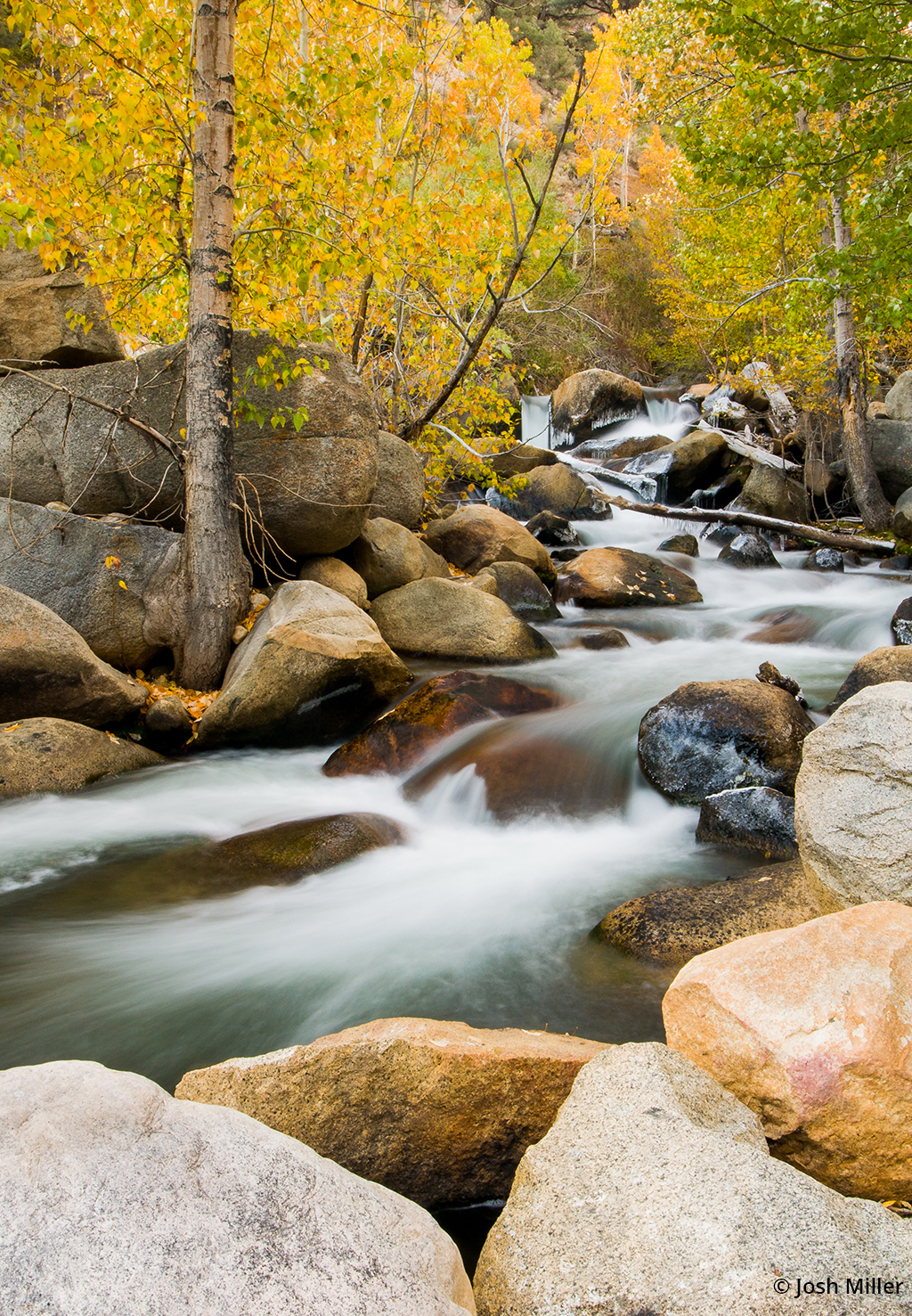
Use your circular polarizer. For this image, by using a circular polarizer, I was able to help remove some of the reflection off the rocks and leaves, thus adding saturation to the image while also slowing down my shutter speed and thus creating more of a water blur in the process.
When shooting fall scenes, often I will have a circular polarizer on each of my lenses and rotate them as needed to bring out the colors. The only time this is an issue is in low light because circular polarizer filters reduce the amount of light reaching the sensor by anywhere from 1 to 2 stops. Luckily, with today’s cameras we can just raise the ISO a little or use a slower shutter speed with a tripod.
Shooting In The Autumn Rain
After talking about circular polarizers and reflections, it may seem counterintuitive, but wet leaves often appear to be more saturated than dry ones (especially when a circular polarizer is also used). Many of my favorite fall shots were made right after a light rainstorm or even sometimes during one.
Obviously, if it’s dumping rain, you may risk your gear, and the more moisture falling between your camera and subject, the softer your images look. It is a fine line but keep an eye on the weather and watch for opportunities to photograph wet fall leaves in the shade with your circular polarizer. Got a water bottle in your pack? Maybe you can make it “rain” on those leaves in your foreground.
Fall Color Timing & Research
Probably the biggest factor in terms of successful fall photography is being at the right place at the right time. No amount of money invested in equipment and training will help you if you show up too early in the season or to a location that turns out to be subpar. Just because your non-photographer friends saw “this aspen grove up on a hill that you just have to shoot” doesn’t necessarily mean it will line up with the light and background the way you want.
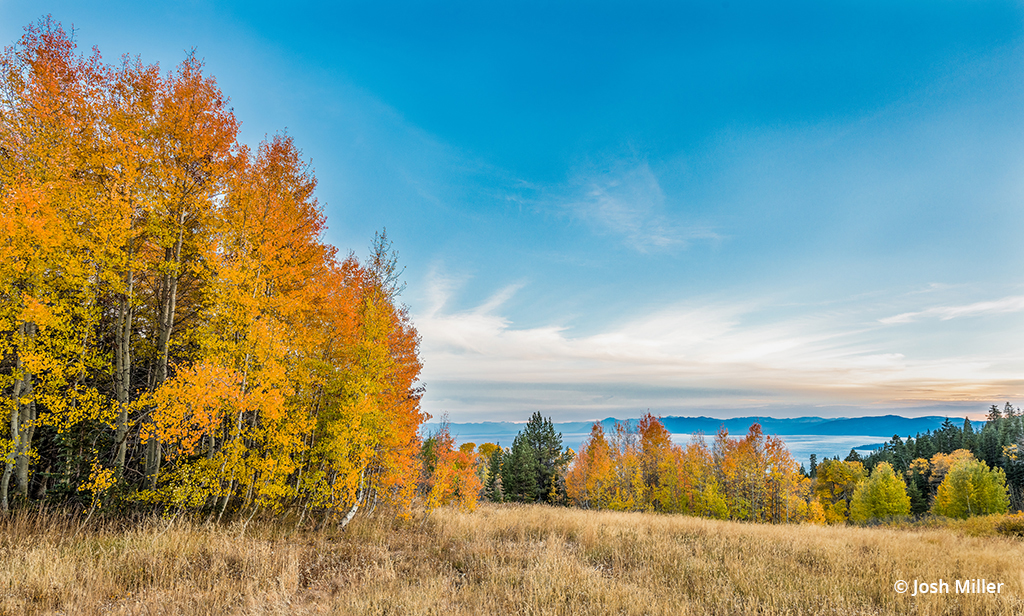
This image of Lake Tahoe is one of my favorites. It combines a feeling of place as well as season. Part of why I like this image so much is that it has a colorful foreground subject that catches the eye and then leads it through the middle ground into the background, giving a feeling of depth to the image. It took me several years of trying to have all the conditions come together for this image, which proves the value of having favorite subjects close to home that you can visit regularly.
Back in the day when there was no internet and far fewer landscape photographers, a sort of underground network developed, with photographers sharing information on local conditions with fellow visiting photographers from all over the country. If you were really tight with someone, they might even share their special “secret” location with you. Today things are far different, and you don’t need to know a local photographer in an area you wish to visit for info on conditions and locations. Now there is a wealth of information on the internet, and for many popular areas, someone even maintains a daily fall color report on their website of all the popular locations in the area. Apps on our phones like the Photographers Ephemeris or Photopills help us preplan our shoots by knowing exact sunrise and sunset times as well as the paths of the sun, moon and stars, while others allow us to previsualize the landscape before we even arrive.
While previous scouting and years of experience in a location can never be fully replaced, never has it been easier to know when and where to be in a location, even if it’s your first visit. The trick is that it has become harder than ever to make new and unique images in these spots as a result.
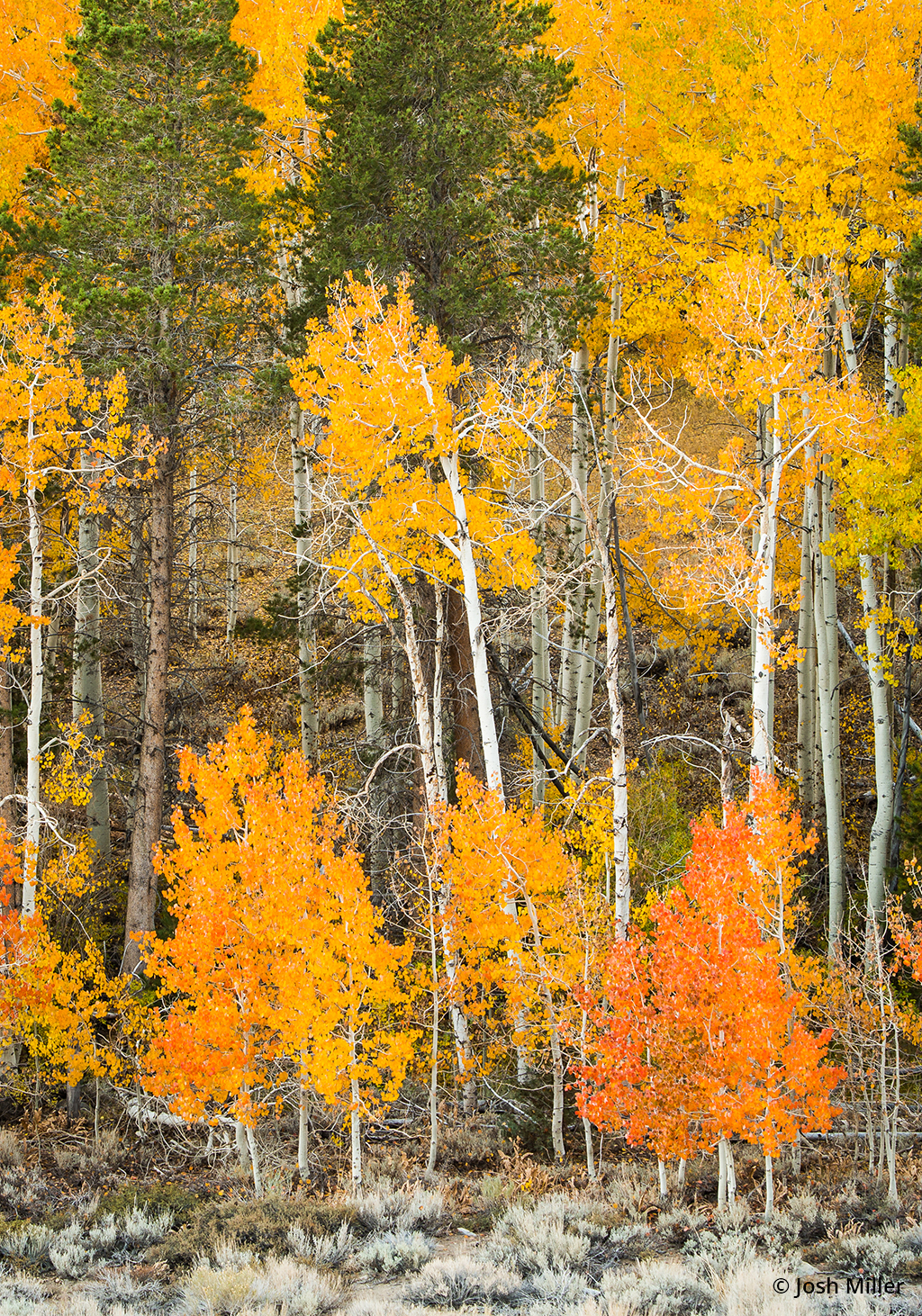
This is another example of using a telephoto to isolate out a small part of a larger scene—and wishing I had done better in the field. The original image was shot at 70mm, but the image you see here is a substantial crop from the original (probably to about 150mm). This is a great example of me learning from my mistakes. If I were to do it over again, I would have shot both the wide images that I did shoot, as well as tighter images like this one in the field to avoid major crops in post-processing. It does go to show the value of modern high-resolution sensors and how they make it possible to recompose on the computer when you want a tighter composition.
Better Late Than Never
Sure, we all want to hit fall colors at their peak, but sometimes planning that big trip is hard when nature isn’t running on schedule. We can do all the research in the world and time things as best we can but still be wrong. To hedge your bet, it’s always better to arrive on the later side of peak colors rather than the early side. Being early to a location means the leaves will still be green and on the trees, while being a little late means you may still find some fall leaves in the trees as well as on the ground, which all make for interesting compositions. Especially with that long lens I mentioned earlier, no one needs to know that the rest of the aspen grove didn’t have any leaves left. Just isolate that interesting part and let people’s imaginations fill in the rest.
The post Exploring Fall Color appeared first on Outdoor Photographer.

